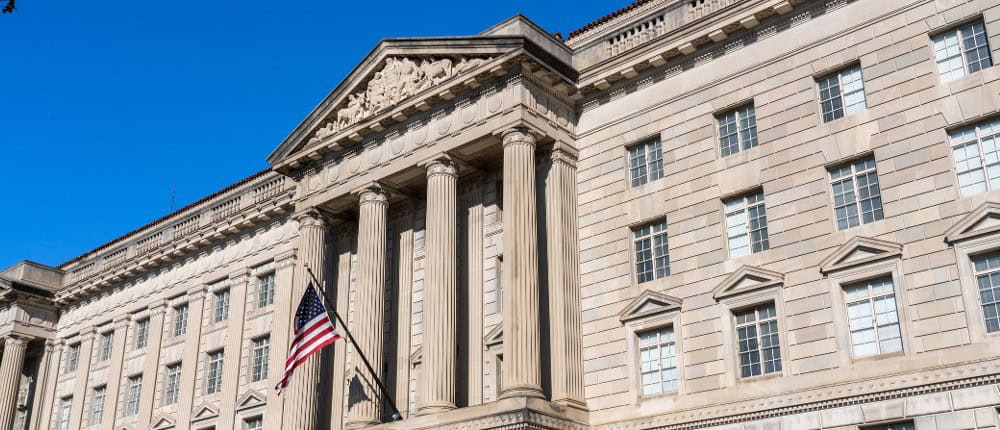What Wall Street expects in 2024.
Wall Street notoriously lays out annual expectations that are often incorrect, with over-zealous predictions that outproject the year-end results, and 2023 was no exception. 2024 remains one of the tougher calls analysts have seen in years, with investors acknowledging a significant bull rally or a market-wide selloff as realistic possibilities. With more than 650 calls conducted by Bloomberg News, it is the predominant sentiment of banks that 2024 will be more of a middle-ground than what we have seen recently. Investors have been crowding the exits for the doomsday recession that is now appearing to be a mirage with JPMorgan predicting a “mild” recession, Barclays forecasting a “soft-ish” landing, and BNY Mellon saying it will be “a healthy and welcome slowdown.” The Wall Street consensus highlights three key points: interest rates beginning to fall, a tepid economic slowdown, and the central bank implementing easier policies to encourage a late-year rebound. With stocks and bonds having a strong rally in the final weeks of last year, investors should expect positive, yet potentially underwhelming gains. The S&P 500 climbed 24% in 2023 essentially erasing the entirety of its 2022 losses, and investors are hoping for a return to normalcy with moderate inflation and ordinary interest rates. To protect against this uncertainty, many firms emphasize quality in stock selection, diversification across geographies and sectors, and loading up on quality yields in fixed income.
Corporate earnings began to see a plateau to close out the year, after a meteoric rise dating back to late 2020. Corporations are hoping that a middle-of-the-road economy in 2024 will provide more stable and predictable earnings, allowing companies to make strategic capital decisions more easily. Most corporations were battling elevated costs and trying to mitigate them by seamlessly passing them onto the consumer without faltering demand. 2024 will likely be the same story but to a lesser extent. Some companies faired the cost battle better than others, and the Street analysts’ “average” economic expectations provide a sigh of relief for many corporate sectors.
Will 2024 keep the swans at bay? Outlook for U.S. banks.
In 2023, the U.S. banking industry was put through the wringer by black swan events that led to the failure of three U.S. banks, the first global systemically important bank (GSIB) collapse since the GFC (Credit Suisse), and a major uptick in geopolitical turmoil. Investors broadly hope 2024 will bring some normalcy after a rather topsy-turvy year in the markets, so let’s take a look at some expectations for U.S. banks in 2024.
Bank’s built capital in 2023, with U.S. bank’s regulatory capital being at some of the highest levels it’s ever been. We received the initial plan for the final Basell III implementation last summer which will increase risk-weighted assets (RWAs) by approximately 15%-25% for most large U.S. banks. Whether this plan is implemented as presented remains to be seen as most bank CEOs spent the second half of the year speaking out against the plan in the media. Banks have also been preparing for a slowdown in economic growth and normalization in asset quality, which has influenced their decision to build capital as well. We expect bank regulatory capital to remain high in 2024.
Asset quality continued to normalize in 2023, but most of the normalization came from unsecured credit like credit cards and personal loans. Credit cards saw 90+ day delinquencies trend up above their 2019 levels in the third quarter of 2023 which underpins the slow normalization trend in U.S. credit. Mortgages and auto loans performed strongly, however, as low locked-in rates helped offset deterioration from higher rates, borrowers appeared more likely to delay credit card payments rather than mortgage payments. Commercial Real Estate (CRE) was the primary area of concern in 2023 which is likely to continue into 2024 as the market for office space doesn’t appear to be thawing and rates remain high. While CRE will be front of mind in 2024 the largest U.S. banks do not have significant exposure, and we expect much of the deterioration in the CRE market will be felt by the private credit funds before the banks begin to feel stress. We expect U.S. credit quality to continue to normalize, but we do not see a material catalyst that could lead to major consumer credit deterioration.
Lending margins likely peaked in 2023 and will plateau in 2024 which means banks will likely look to non-interest income to grow earnings. 2023 will be a soft comparable for most banks, and we saw merger and acquisition activity pick up in the second half of 2023 which should continue into 2024. We do not expect a record year for bank profits, but profitability is unlikely to be a material credit concern as well.
Finally, the stress on bank bond books that led to the failures last March should continue to abate in 2024 with the Fed unlikely to continue hiking and a more stable rate environment. Any decline in rates would be positive for bank bond books, and the unrealized losses caused by rate increases will continue to work themselves out as the year progresses. Overall, 2024 looks to be a continuation of a trend and without another black swan event, U.S. banks are well-positioned to enter the new year.



